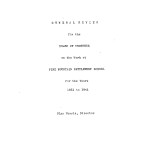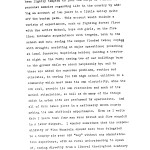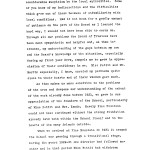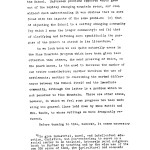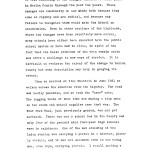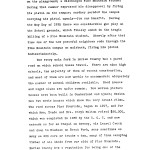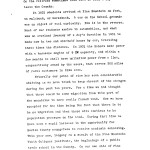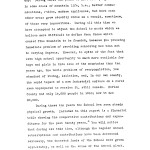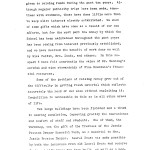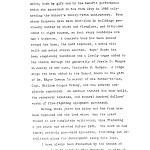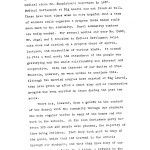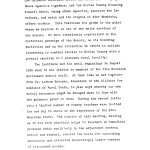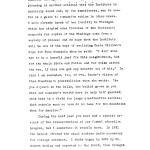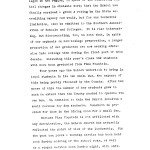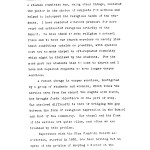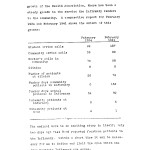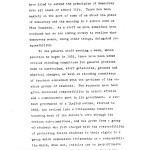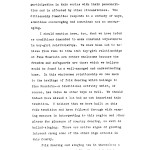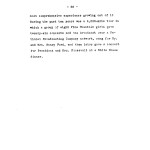Pine Mountain Settlement School
Series 04: ADMINISTRATION
Glyn Morris, Director
1931-1941 General Review for BOT
On Work at PMSS
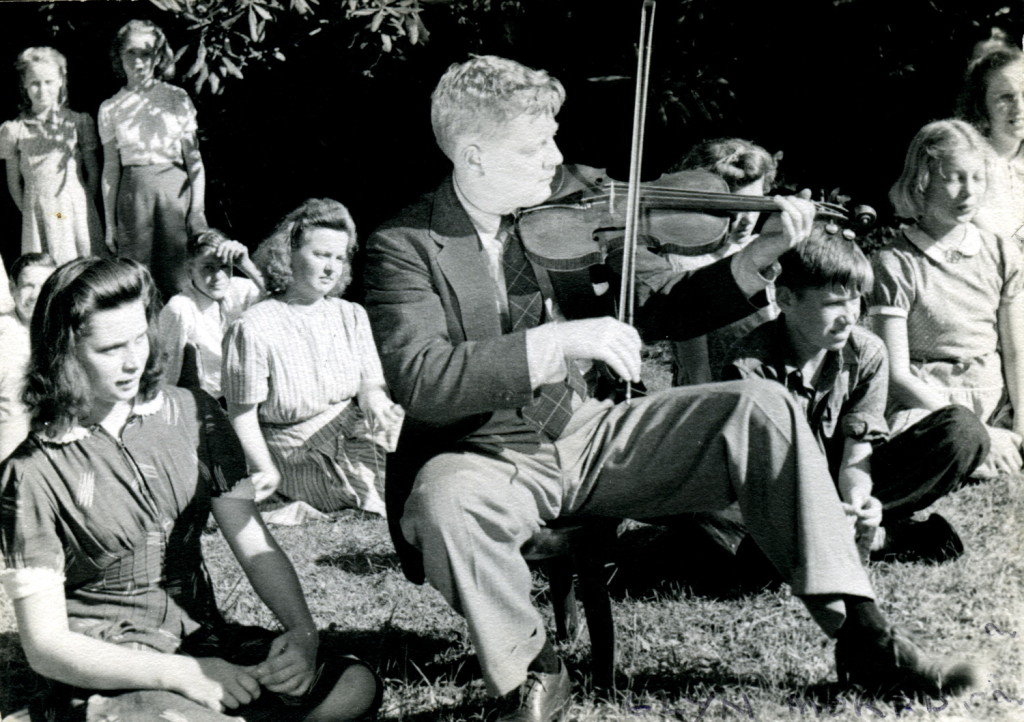
Glyn Morris playing fiddle. X_100_workers_2614_mod.jpg (dup)
GLYN MORRIS 1931-1941 General Review for BOT on Work at PMSS
TAGS: General Review for BOT on Work at PMSS 1931-1941, Glyn Morris, PMSS Board of Trustees, rural neighborhoods, The Road, Laden Trail, Rural Youth Guidance Institute, fundraising, invested funds, financial management, building improvements, summer programs, work camps, Line Fork Medical Settlement, Medical Settlement at Big Laurel, rural community centers, Harlan County Planning Council, college preparation, state accrediting agency, non-sectarian religion, Pine Mountain Health Association, Citizenship Committee, folk dancing, PMSS Octet
The following are a transcription and images of a “General Review for the Board of Trustees on Work at Pine Mountain Settlement School for the years 1931-1941,” a 22-page report written by the School’s Director, Glyn Morris in 1941.
TRANSCRIPTION: 1931-1941 General Review for BOT on Work at PMSS
GENERAL REVIEW FOR BOARD OF TRUSTEES
ON WORK AT PINE MOUNTAIN SETTLEMENT SCHOOL
FOR YEARS 1931-1941
GLYN MORRIS, DIRECTOR
page 1
Inasmuch as with this year Mrs. Morris and I complete ten years of service at Pine Mountain, it seems appropriate to add to the formal report to the Board of Trustees for 1940-41 an informal and general review of the work at Pine Mountain through the past ten years, even though there are some real difficulties in presenting a report that will be inclusive but brief. Many things of importance will naturally be omitted for the sake of brevity and it is difficult to choose what should be included and what left out. Everything that has taken place within the past ten years, provided it is related to Pine Mountain, is important, for Pine Mountain is the sum of all these things and one event affects another. As we write this report we do constantly have in mind the work that has been done which is not mentioned here, the gifts that have been made — in short, the entire play of events that centers in this valley but spreads out to touch many people near and far.
There is some temptation to make the report purely autobiographical and at the outset I must ask your indulgence if this record should seem overly personal and intimate. The autobiographical tempts me and I often wish that I had been inclined to keep a diary because, although Pine Mountain may be quite out in the country where, according to most urban dwellers, life must be terribly dull, it is by no means so, nor have we ever felt the absence of excitement. I have
page 2
been lightly tempted to join the corps of writers of personal memoirs regarding life in the country by adding an account of ten years in a little valley quite off the beaten path.• This account would include a variety of experiences, such as fighting forest fires with the entire School, boys and girls, on the fire line; Intimate acquaintance with tragedy, both in the School and out; seeing the campus flooded twice; coping with drought; assisting at major operations; preaching at local funerals; baptizing babies; running a tractor at night on the farm; seeing two of our buildings burn to the ground while we stood helplessly by; and to these are added the numerous problems, routine and otherwise, in caring for 120 high school children In a community which must make its own electricity, mine its own coal, provide its own recreation and much of its mental stimulation, as well as do many of the things which in urban life are performed by specialists. And all of this takes place in a nationally known county making its own difficult adjustments. Even as I write this I learn that four men were killed and five wounded in a labor dispute. I wonder sometimes that the responsibility of Pine Mountain should have been delegated to a twenty-six-year-old “boy” without any administrative experience, with no rural understanding to speak of, coming directly from a liberal theological seminary in the most urban center of America; especially as in 1931 every person from New York was looked upon with
page 3
considerable suspicion by the local authorities. Some of you know of my indiscretions and the difficulties which grew out of these because of unfamiliarity with local conditions. Had it not been for a goodly amount of patience on the part of the Board as I learned the hard way, I should not have been able to carry on. Through all our problems the Board of Trustees have been most sympathetic and helpful and, as time increases, my understanding of the gaps between my own and the Board’s knowledge of the situation, especially during my first year here, compels me to grow in appreciation of their confidence in me. Miss [Katherine] Pettit and Mr. [Darwin D.] Martin especially, I know, carried my problems quite close to their hearts and of their wisdom gave much.
As time makes us more sensitive to the problems of the area and deepens our understanding of the extent of the work already done before 1931, we grow in our appreciation of the founders of the School, particularly of Miss Pettit and Mrs. [Ethel de Long] Zande. Surely Pine Mountain could not have continued without the strong foundation already laid both within the School itself and in the hearts of its many friends outside.
When we arrived at Pine Mountain in 1931 it seemed the School was passing through a transitional stage. During the years 1929-31 one director had followed another and in that period Miss Pettit had withdrawn from active participation in the immediate affairs of
page 4
the School. Unforeseen problems appeared which grew out of the rapidly changing mountain scene, and even without much understanding it was obvious that we were faced with two aspects of the same problem: (a) that of adjusting the School to a swiftly changing community (by which I mean the larger community): and (b) that of clarifying and defining more specifically the purpose of the School as stated in its literature.
As we look back we see quite naturally areas in the Pine Mountain program which have been given less attention than others, the most pressing of which, as the Board knows, is the need to increase the number of our active contributors; another Involves the use of settlements; another is overcoming the marked differences between the School itself and the immediate community, although the latter Is a problem which is not peculiar to Pine Mountain. There are other areas, however, in which we feel some progress has been made along the general lines laid down by Miss Pettit and Mrs. Zande, to whose writings we have frequently referred.
Before turning to this, however, it seems necessary
* “To give industrial, moral, and Intellectual education, Christian, but non-sectarian; to serve as a social center in an isolated, Intensely rural neighborhood; to further by teaching and by the wise use of its own 335 acres of land, the agricultural and economic development of the country,”
page 5
to tell something of the changes which have taken place in Harlan County through the past ten years. These changes are constantly on our minds both because they come so rapidly and are radical, and because any failure to recognize them would make the School an anachronism. Even in other sections of the highlands, where the changes have been relatively more normal, many schools have either been absorbed into the public school system or have had to close, in spite of the fact that the basic problems of the area remain acute and offer a challenge to new ways of service. It is difficult to evaluate the extent of the change in Harlan County but some description may help in gauging its extent.
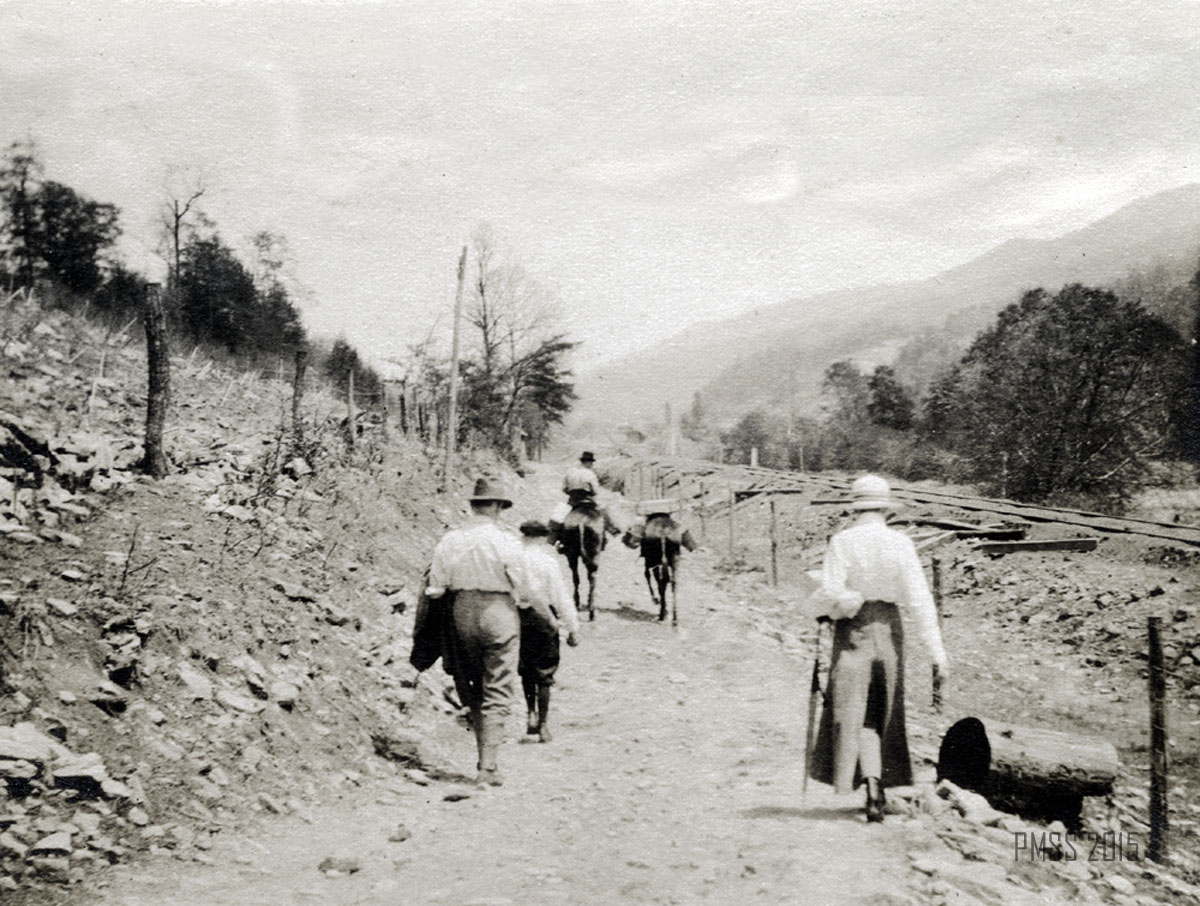
Roettinger Album. “Down the road.” [Two men, one man riding on one of two mules, woman and boy walking down dirt road with backs to camera. Railroad tracks to right]. [roe_002bb_mod.jpg]
page 6
on the playground; a discharged Pine Mountain student during that summer expressed his disapproval by firing his pistol on the campus; another paraded the campus carrying his pistol openly—for our benefit. During the May Day of 1932 there was considerable gun play on the School grounds, which finally ended in the tragic killing of a Pine Mountain student. Shortly after that time one of the now peaceful neighbors rode through the Pine Mountain campus on muleback, firing his pistol Indiscriminately.
Now every main fork in Harlan County has a paved road on which school buses travel. There are nine high schools, the majority of them of recent construction, and most of them are now unable to accommodate adequately the number of school children available. Road houses and night clubs are quite common. New motion picture houses have been built in Cumberland and Lynch; Harlan has two movie houses which show the very latest films. The road across Pine Mountain, begun in 1917, and for which Mrs. Zande and Mrs, Caryl Holton raised $150,000, which was completed in 1935 by the C. C. C. and now extends as far as Chapel on Greasy, via Laurel Creek and down to Bledsoe on Beach Fork, sees sometimes as many as 200 cars or trucks a day, many of them carrying timber of all kinds from our side of Pine Mountain. Harlan County has a reputation for being one of the best used-car markets in this part of the country.
page 7
On the railroad sometimes 1500 cars of coal a day leave the County.
In 1931 students arrived at Pine Mountain on foot, on muleback, or horseback. A car on the School grounds was an object of real curiosity. Now it is the reverse. Most of our students arrive in automobiles, and what was an overland journey of a day’s duration in 1931 is made now in two and one-half hours by car, traveling three times the distance. In 1931 the School made power with a kerosene engine of 9 KW capacity, and within a few months we shall have unlimited power from a lino, cooperatively owned by the users, that serves 300 miles of rural customers in this area.
Naturally, our point of view has seen considerable shifting as we have tried to keep abreast of the changes during the past ten years. For a time we had thought that there would be some migration from this part of the mountains to more easily farmed land. Now we have accepted for the time being the fact that there is to be no migration and that there will continue to be population pressure on the land. During that time we have seen a rapid increase in the opportunity for Harlan County youngsters to receive academic schooling. This year saw, largely as a result of the Pine Mountain Youth Guidance Institute, the beginnings of a public trade school in the County. On our own side of Pine Mountain a school bus brings in thirty children each
page 8
day. During these ten years we have seen progress in some areas of mountain life, i.e., better communications, radios, modern appliances, but have seen other areas grow steadily worse as a result, sometimes, of these very innovations. During all this time we have attempted to adjust the School to needs which we believe more difficult to define than those which caused Pine Mountain to be founded, because the pressing Immediate problem of providing schooling has been met in varying degrees. However, in spite of the fact that even high school opportunity is much more available for boys and girls in this area of the mountains than ten years ago, the basic problems of overpopulation, low standard of living, isolation, and, in our own county, the rapid impact of a new industrial culture on a rural area unprepared to receive it, still remain. Harlan County had only 14,000 people in 1910; now [1941] it has 80,000.
During these ten years the School has seen steady physical growth. Included In this report is a financial table showing the comparative contributions and expenditures for the past twenty years.** You will notice that during all this time, although the regular annual subscriptions and contributions have been decreased seriously, the invested funds of the School have grown appreciably, as well as the value of the School plant.
**See p. 25.
page 9
On the whole, as you know, not much attention has been given to raising funds during the past ten years. Although regular publicity trips have been made, sometimes with students, these have done little more than to keep alive interest already established. We know of some gifts which have come as a result of our own efforts, but for the most part the money by which the School has been maintained throughout the past years has been coming from Interest previously established, and we have derived the benefit of work done so well by Miss Pettit, Mrs. Zande, and others. In this respect I have felt constantly the value of Mr. [Charles N.] Manning‘s careful and wise stewardship of Pine Mountain’s financial resources.
Some of the problems of raising money grow out of the difficulty in getting fresh material which reflects accurately the need of our area without exploiting it. Competition is noticeable in this as in all other areas of life.
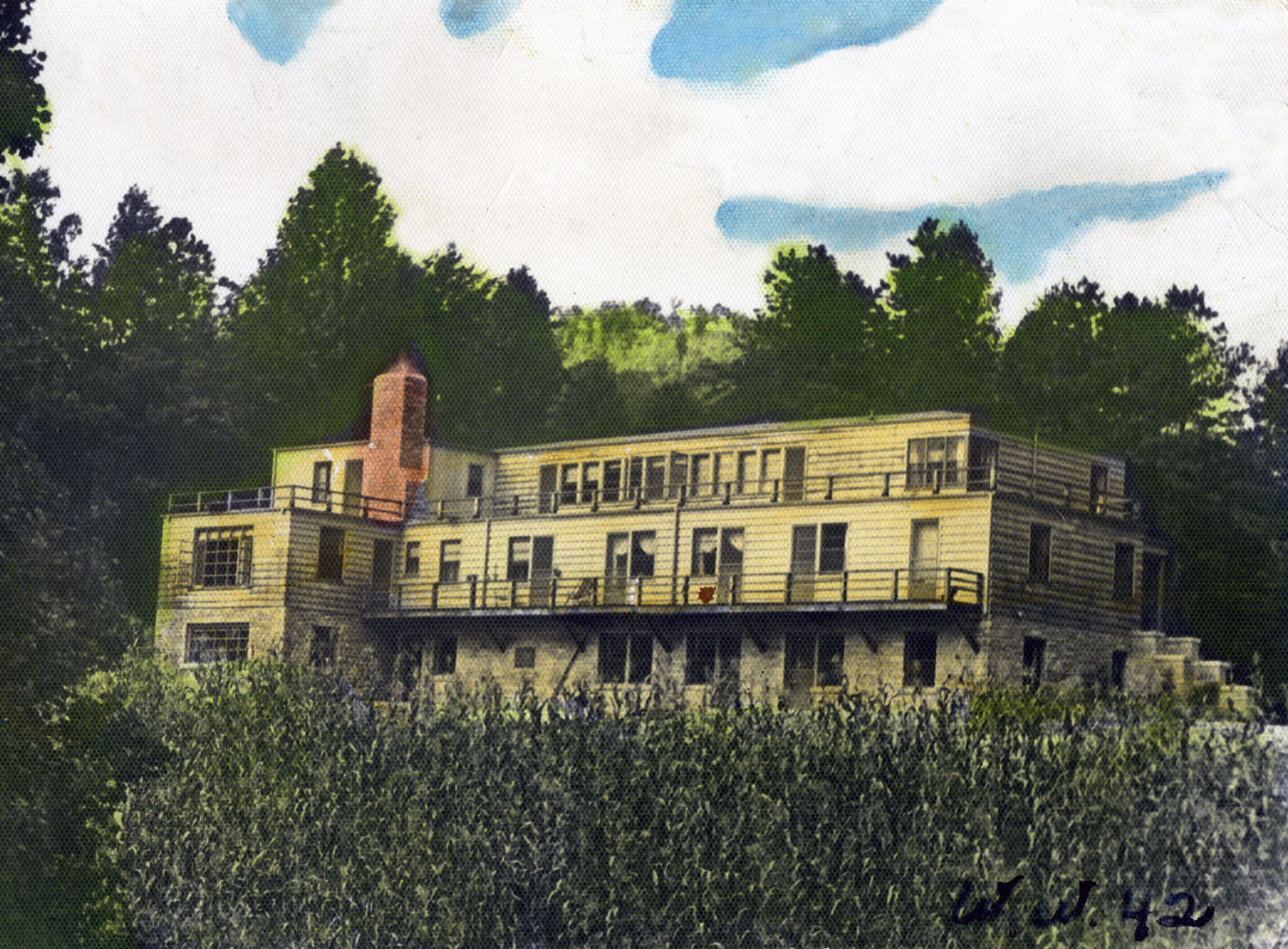
West Wind. Re-worked photograph, shortly after completion, 1942. [II_14-02_west_wind_0473a_mod.jpg]
page 10
of which $625 was made possible by Mrs, Leonard Elsmith, both by gift and by the benefit performance which she sponsored in New York City in 1938 celebrating the School’s twenty-fifth anniversary.
Five steam furnaces have been installed in buildings previously heated by stove and fireplace, and bathrooms added to eight houses, so that every residence now has a bathroom. A concrete base has been placed around the barn, the herd improved, a metal silo built and metal stalls erected. Boys’ House has been completely remodeled and a lovely organ added to the church through the generosity of Jessie D. Munger in memory of her aunt, Charlotte F. Hedges. A large stage has been added to the School House as the gift of Dr. Edgar Dawson in memory of his father-in-law, Capt. William Cooper McKemy, and the library completely remodeled. An outdoor theatre has been built, the reservoir repaired, and several hundred dollars’ worth of fire-fighting equipment purchased.
During these years the dairy and the farm have been improved and the land where once the creek flowed is now completely cultivated, thus finishing a job which was started before 1931. The herd is now almost entirely pure-bred Ayrshire, following out established plans for development along this line.
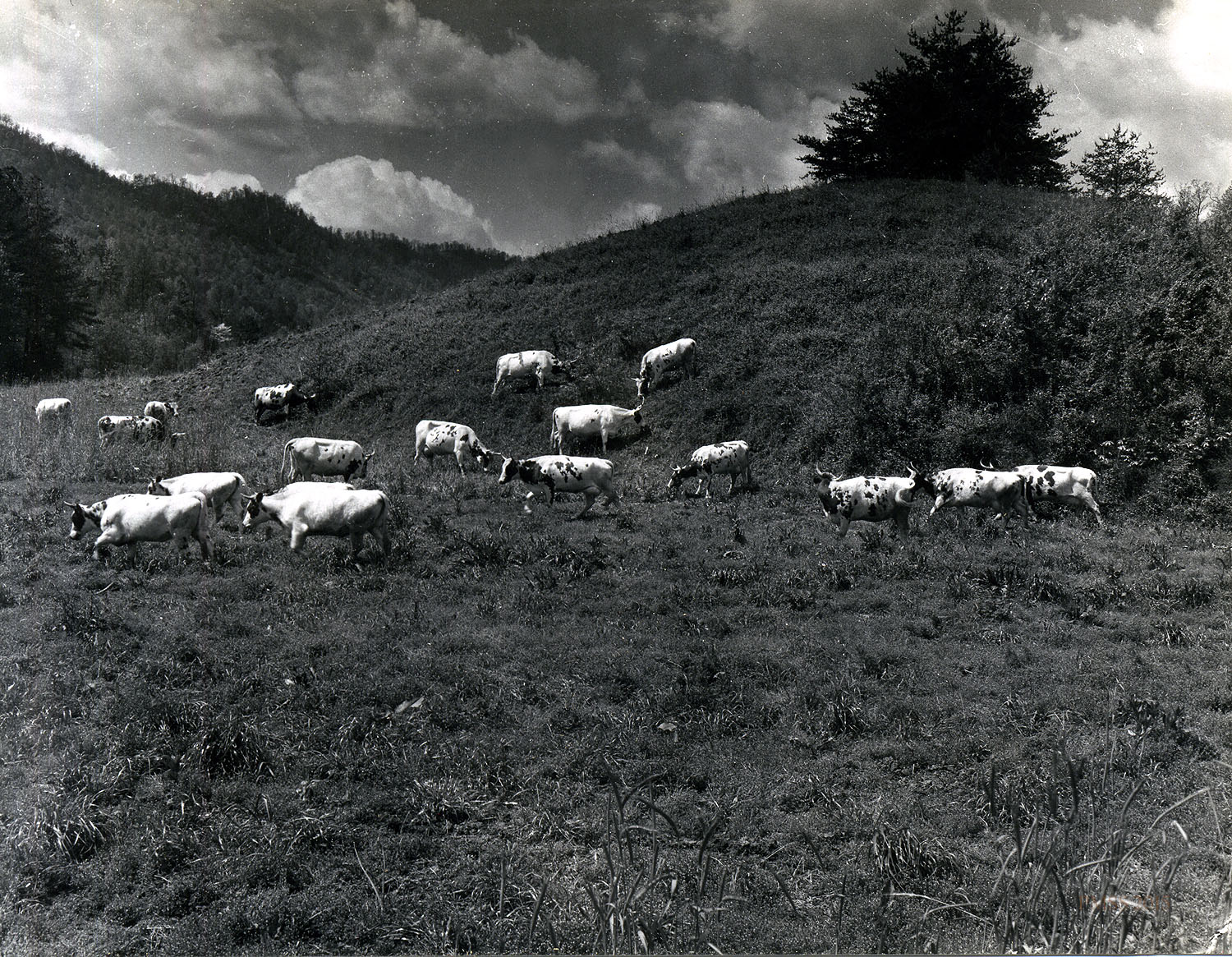
The Ayrshire herd grazing at the knoll. Arthur W. Dodd Album. [dodd_A_009_mod.jpg]
page 11
the small number of students who can be taken care of. This, together with the fact that the School was founded to be a community center, albeit in a very scattered community, has made us seek for ways whereby the influence of the School might be extended and our expenses justified. It has seemed that, without stating the matter specifically, the Board of Trustees has desired the School to count for more during the summer time. With all these things in mind, we have tried to develop a summer program, as well as to extend our influence in the community. Until the road was built it was difficult to do some of the things that seem to be done more naturally now, I remember some of the first summers at Pine Mountain when, with less than twenty students and perhaps ten workers, who gave attention primarily to maintenance, our family was quite small. Now the summer is as busy as any other time of the year. There are the conference for Presbyterian youth, the work camp, the camp for under-privileged children, and the Youth Guidance Institute, Through all of these it seems we are getting a larger return on our investment,
I believe It was the hope of the founders that at some time or other Pine Mountain could sponsor a chain of centers throughout this area, of which The Cabin at Line Fork and Medical Settlement [at Big Laurel] were the first units. This idea, however, had been discontinued before 1951, I believe. With little variation the work at Line Fork
page 12
has continued, although with much less emphasis on the medical since Dr. Stapleton’s departure in 1937. Medical Settlement at Big Laurel has not fared so well. There have been times when we were hopeful that a team of workers could organize a program there which could mean much to the community. Rural community centers are badly needed. For several months one year Mr. Dodd, Mr, Angel and I traveled to Medical Settlement twice each week and carried on a program there of sports, lectures, and recreation of various kinds. It seemed to fill a real need; the attendance of the people was gratifying and the whole relationship was pleasant and cooperative. With the increase of our duties at Pine Mountain, however, we were unable to continue this. Although two married couples have started at Big Laurel, they have given up after a short time and no consecutive program has been carried on there during the past ten years.
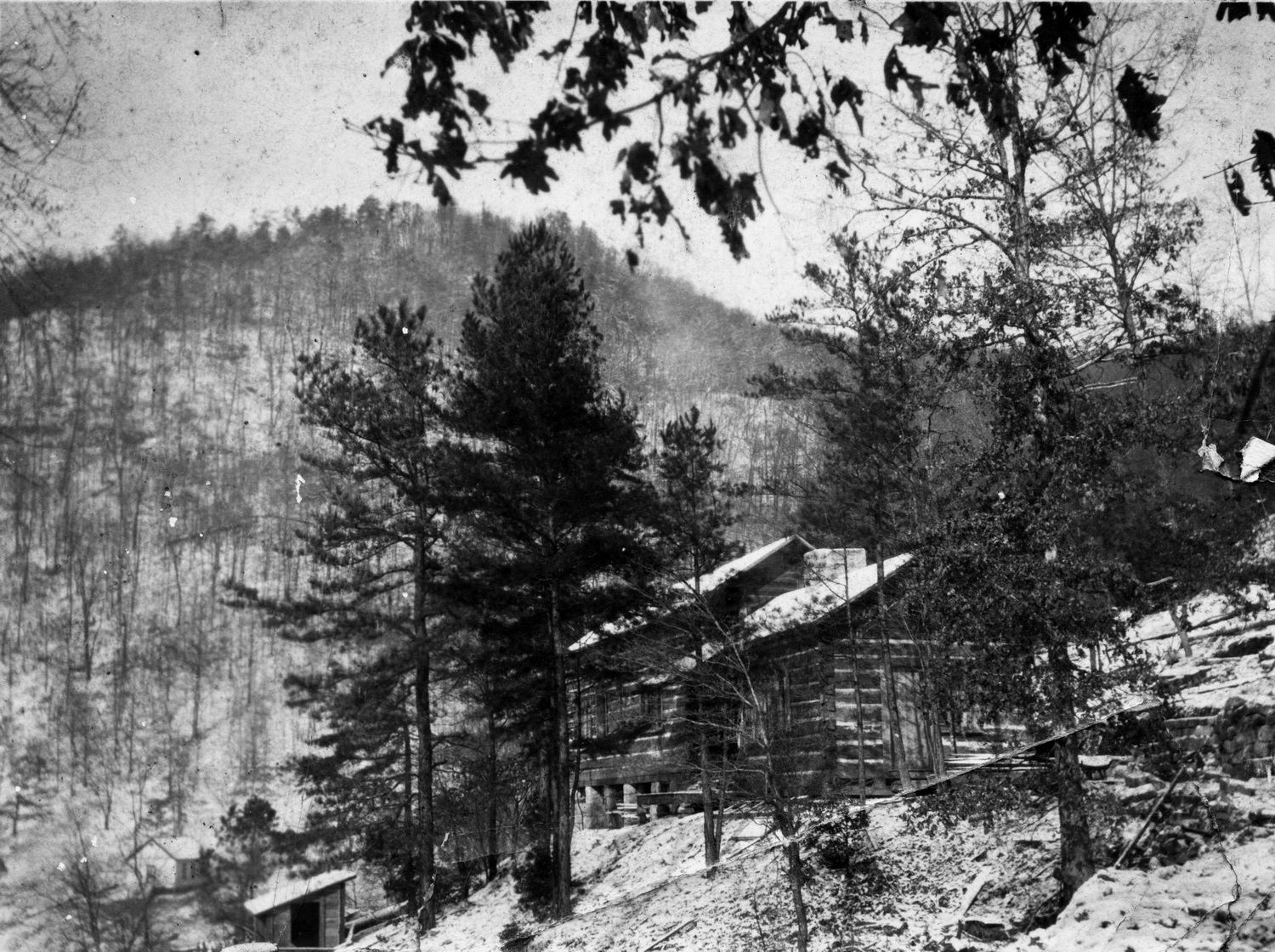
Medical Settlement- Big Laurel. Log cabin on snowy hillside. [big_laurel_3343.jpg]
page 13
ity. In this I believe we have even more opportunity for developing understanding and cooperation. Lewis Mumford, in his recent book, Faith for Living, calls attention to the place which young people must have in revitalizing rural life, and says that with their own hands they must repair the “rural slums,” and this is another confirmation of our belief that Pine Mountain is going in the right direction in this phase of the program.
Another growth in our extension service which I should like to mention in some detail is the Pine Mountain Youth Guidance Institute. As a preface to this I should like to say that the growing complexity of modern life, with its subsequent confusion to youth, makes it increasingly necessary for the community to work carefully and consistently so that youth may not only have guidance but that the structure of life itself may be arranged wherever possible to enable the best in youth to have a chance for growth. To this problem, no longer successfully dealt with by chance, communities must devote special attention. The Pine Mountain Institute is one way of doing this and of providing opportunity for developing a methodical technique for handling a somewhat vague and complicated problem in Harlan County. Agencies of many kinds are at work on youth problems, but unless they work together, unless they have common aims, their energy is dissipated.
page 14
The Guidance Institute offers one means for bringing these agencies together, and the Harlan County Planning Council which, among other agencies, sponsors the Institute, and which had Its origins at Pine Mountain, offers another. This Institute has grown to the point where we believe It is one of the major services of the School. We have consciously capitalized on the historical prestige of the School, on its boarding facilities and on the attraction it offers to outside leadership to combine service to Harlan County with a partial vacation in a pleasant rural locality.
The Institute had its small beginnings in August 1935 when it was limited to members of the Pine Mountain Settlement School staff. At that time we met together with Dr. Latham Hatcher, President of the Alliance for Guidance of Rural Youth, to plan ways whereby our own School resources might be brought more in line with the guidance point of view. During the second Institute, a limited number of County teachers were invited for one day to share in the experience of the Pine Mountain staff. The results of this meeting, dealing as it did with practical helps to teachers on immediate problems which would help in the adjustment between school and student, created the basis for succeeding Institutes and attracted increasingly larger numbers of interested people.
That the Institute has grown so rapidly is an evidence of its filling a real need, and the growing
page 15
emphasis throughout the country, too, on community planning is another evidence that the Institute is basically sound and, by its experiences, may be useful as a guide to community action in other areas. I have already heard of one locality in Michigan which has adopted some features of the Institute; requests for copies of the Findings come from a variety of places; and we hope that the Institute will be one of the ways of realizing Uncle William’s hope for Pine Mountain when he said:
“I don’t want hit to be a benefit just for this neighborhood, but for the whole State and Nation and for folks across the sea, if they can get any benefit out of hit.“
In this I am reminded, too, of Mrs. Zande‘s vision of Pine Mountain’s possibilities when she wrote:
“As you sojourn in the hills, the belief grows on you that our country’s wealth here is only half guessed; that this is a field for large constructive service; that schools such as ours do no less for the mountains than for America,“
During the past year you have had a special account of the transformation of our formal education program, but I summarize it briefly here. In 1931 the School offered the usual sixteen units necessary for college entrance. A study begun in 1931 by Mr. Hubert Hadley and reported to the Board, then brought up to date and again reported to the Board in March
page 16
1934, and now once more brought up to date, gives the picture of student turnover. It shows that up to the time shown by Mr, Hadley’s study (1931) the average length of time of a student’s stay in Pine Mountain was 11 school months. (This corresponds with the experience of another well-known mountain school.) The average length of time of a student’s stay during the period 1931-41 is approximately 19 months, In 1934, however, we felt that much more attention should be given to a curriculum for students who were not planning to go to college, and from then on definite steps were taken which, while not completely disregarding college preparation, did give much more attention to students not planning to enter college. The curriculum was gradually revised in terms of local needs to include more practical training and to give less emphasis on grades and credits. It does not seem that the quality of the academic work has suffered, but that the curriculum has merely been brought more into balance with the needs of the students.
It is interesting to note that the recent report by the Progressive Education Association of its eight-year study substantiates in general what has been done at Pine Mountain independently of this study; also, that the School’s graduates may enter Berea or the University of Kentucky as well 93 other colleges
***See p. 23.
page 17
in the region, in spite of the relatively radical changes in academic work; that the School has finally received a grade A rating by the State accrediting agency and would, but for one technical limitation, also be admitted to the Southern Association of Schools and Colleges. It is also interesting, but disconcerting, too, to note that, in spite of our emphasis on non-college preparation, a larger proportion of our graduates are now seeking admission into college than during the first part of this decade. Including this year’s class 102 students will have been graduated from Pine Mountain.
Four years ago the School undertook to bring in local students in its own small bus, the expense of this being partly financed by the County. After two years of this the number of day students grew to such an extent that the County needed to operate its own bus. In addition to this the School receives a small revenue for day students. Luncheon is provided for them in the dining room for a small fee.
Because Pine Mountain is not affiliated with any denomination, the School church has naturally reflected the point of view of its leadership. For the past ten years a worship service has been held each Sunday morning of the school year, as well as a vesper service each Sunday night, with additional special services when occasion demanded.

Chapel choir. III_campus_life_0797c
page 18
There Is a student choir and for the past three years a student committee has, among other things, assisted the pastor in the choice of subjects for sermons and helped to interpret the religious needs of the students. I have resisted constant pressure for more overt and un-directed religious activity at the School, We have aimed to make religion a natural force and to have our church services as nearly like ideal conditions outside as possible, with special care not to make chapel an oft-repeated formality which might be disliked by the students. For the most part our students like to come to church and I have had repeated requests to have longer vesper services.
A recent change In vesper services, instigated by a group of students and workers, which takes the service away from the chapel two nights each month, has brought forth objections on the part of many. One unsolved difficulty is that of bridging the gap between the form of religious expression in the School and that of the community. Our chapel and the form of its service are quite alien, and often we are troubled by this problem.
Experience with the Pine Mountain Health Association, started in 1932, has been halting but in spite of the problem of keeping a doctor at the School and the setbacks accompanying this in the
page 19
growth of the Health Association, there has been a steady growth In the service the Infirmary renders to the community. A comparative report for February 1934 and February 1941 shows the extent of this growth:
February 1934 February 1941
Student office calls 99 137
Community office calls 36 89
Doctor’s calls in community 74 58
Clinics
Number of patients at clinics 9 8
Number days community
patients in Infirmary 0 135
Number days school
Patients in Infirmary 51 92
Maternity patients at Infirmary 0 5
Maternity patients at home 4 1
**The medical work is an exciting story in itself; only two days ago Miss Rood reported fourteen patients in the Infirmary. Within a short time it may be necessary for us to define and limit the area which the Pine Mountain Infirmary can serve.
We have learned much from our experience as we
page 20
have tried to extend the principles of democracy into all areas of school life. There has been anxiety on the part of some of us about the place of democracy and its meaning in a school such as Pine Mountain. As a staff we have sometimes been confused but we are coming slowly to realize that democracy means, among other things, delegated responsibility.
To one general staff meeting a week, which practice we began in 1931, there have been added various standing committees for general problems such as curriculum, staff grievances, grounds and physical changes, as well as standing committees of teachers concerned with the problems of the various groups of students. The students have been given increased responsibility in school affairs and a commensurate part in its government. A student government of a limited nature, started in 1932, has evolved into a Citizenship Committee touching much of the School’s life through its various sub-committees, and has grown from a group of students who felt charged with the responsibility of protecting fellow students in their rights to a group which emphasizes citizenship as a responsibility which, when met, entitles one to proportionate privileges. The constitution is organic and has passed through repeated changes as conditions de-
page 21
manded. The response of the students and their participation in this varies with their personalities and is affected by other circumstances. The Citizenship Committee responds in a variety of ways, sometimes encouraging and sometimes not so encouraging.
I should mention here, too, that we have tried as conditions demanded to make constant adjustments in boy-girl relationships. We have been led to believe from time to time that boy-girl relationships at Pine Mountain are rather wholesome because the freedom and safeguards are those which we believe would be found In a well-managed and understanding home. In this wholesome relationship, we owe much to the heritage of folk dancing which belongs to Pine Mountain — a traditional activity which, of course, has value in other ways as well. We should indeed have missed a lot had we not inherited this tradition, I believe that we have built on this folk tradition and have followed through with varying success in interpreting to this region and other places the pleasure of country dancing, as well as ballad-singing. There are active signs of growing interest among some of the other high schools in this County.
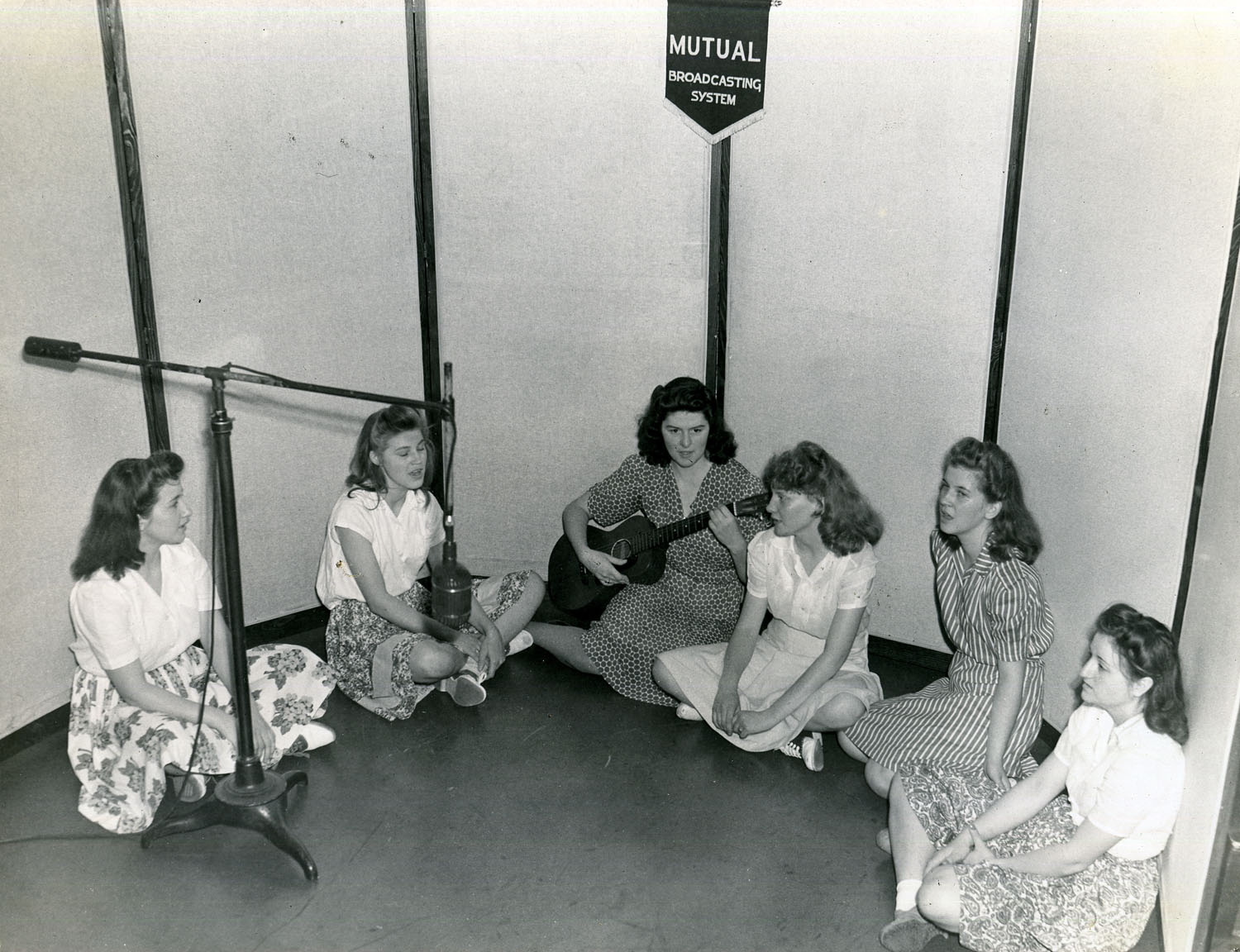
Flora Patsy Hall (2nd from left), singing ballads for Mutual Broadcasting. Company, c. 1942. [020_students_10_006.jpg]
page 22
most comprehensive experience growing out of it during the past ten years was a 4,000-mile tour in which a group of eight Pine Mountain girls [PMSS Octet] gave twenty-six concerts and one broadcast over a National Broadcasting Company network, sang for Mr, and Mrs. Henry Ford, and then later gave a concert for President and Mrs. Roosevelt at a White House dinner.
END
GALLERY: Glyn Morris 1931-1941 General Review for BOT on Work at PMSS
- Morris. General Review for BOT on Work at PMSS, 1931-1941. Cover
- Morris. General Review for BOT on Work at PMSS, 1931-1941. 001
- Morris. General Review for BOT on Work at PMSS, 1931-1941. 002
- Morris. General Review for BOT on Work at PMSS, 1931-1941. 003
- Morris. General Review for BOT on Work at PMSS, 1931-1941. 004
- Morris. General Review for BOT on Work at PMSS, 1931-1941. 005
- Morris. General Review for BOT on Work at PMSS, 1931-1941. 006
- Morris. General Review for BOT on Work at PMSS, 1931-1941. 007
- Morris. General Review for BOT on Work at PMSS, 1931-1941. 008
- Morris. General Review for BOT on Work at PMSS, 1931-1941. 009
- Morris. General Review for BOT on Work at PMSS, 1931-1941. 010
- Morris. General Review for BOT on Work at PMSS, 1931-1941. 011
- Morris. General Review for BOT on Work at PMSS, 1931-1941. 012
- Morris. General Review for BOT on Work at PMSS, 1931-1941. 013
- Morris. General Review for BOT on Work at PMSS, 1931-1941. 014
- Morris. General Review for BOT on Work at PMSS, 1931-1941. 015
- Morris. General Review for BOT on Work at PMSS, 1931-1941. 016
- Morris. General Review for BOT on Work at PMSS, 1931-1941. 017
- Morris. General Review for BOT on Work at PMSS, 1931-1941. 018
- Morris. General Review for BOT on Work at PMSS, 1931-1941. 019
- Morris. General Review for BOT on Work at PMSS, 1931-1941. 020
- Morris. General Review for BOT on Work at PMSS, 1931-1941. 021
- Morris. General Review for BOT on Work at PMSS, 1931-1941. 022
See Also:
GLYN MORRIS Director – Biography
GLYN MORRIS 1931-1977 Guide to Talks, Writing, and Publications

